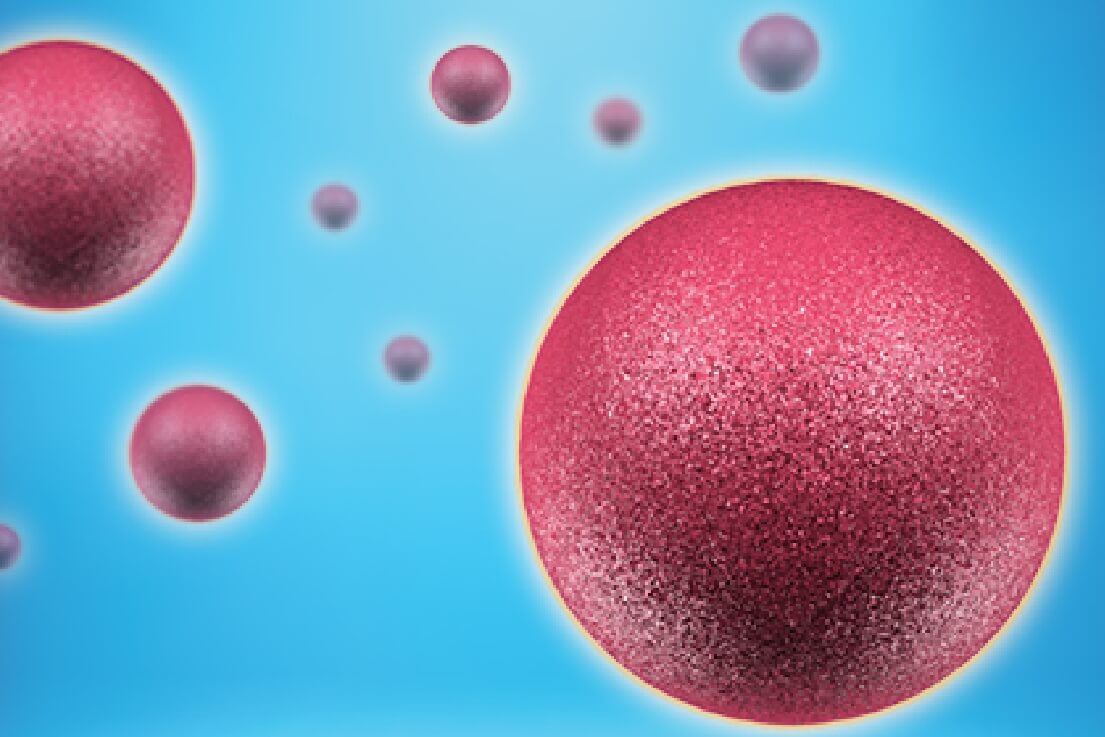A Luminex assay is an immunoassay that can measure multiple analytes simultaneously in a single assay volume. Luminex xMAP technology employs a bead-based detection that can simultaneously measure up to 100 analytes in one sample. These beads are color-coded and dyed with various proportions of fluorophores, where each fluorophore corresponds to a unique bead region. Luminex cytokine assays are vital for quantifying multiple cytokines and provide data about disease and normal biological functioning.
In a typical Luminex multiplex immunoassay, analyte-specific antibodies are bound to the beads and then incubated with the sample. Post-washing, a biotinylated antibody and Streptavidin- Phycoerythrin complex are added to the samples. The Luminex multiplex instrument has two lasers. The first laser excites the bead to determine the region, whereas the second laser determines the magnitude of the derived signal. This signal is directly proportional to the amount of target analyte present in the sample. Thus, Luminex bioplex assays have become crucial for the success of drug discovery and development projects.
Despite their prevalence in the drug discovery process, Luminex assay services must always aim at considering top trends and growth in the Luminex assay space. The current article highlights developments in Luminex assays in 2024.
Trends and evolutions in Luminex assays
Balancing specificity, reproducibility, and throughput is a challenge with multiplex assays. However, this problem is partly due to the inherent nature of multiplex assays. Readings from different wells are bound to produce assay variability. Although multiplexing approaches have helped scientists reduce confounding variables, there are still situations, such as cross-reactivity, where analytes need to be analyzed separately.
The Covid-19 pandemic has further highlighted this challenge. Measuring isotopes of Sars-CoV-2 antibodies must be a straightforward process. However, it is not so linear. Each antibody isotype requires a single reporter system. Moreover, this data may not be as comparable across different studies. Newer assay approaches, such as measuring antibody isotypes together, may help decrease assay variability. Besides, a single reaction approach can also reduce sample volumes.
Must Read: The Benefits of GLP Testing: Enhancing Accuracy and Accountability in Scientific Studies
Luminex multiplex immunoassays are often preferred over singleplex assays as they provide more robust and reliable results. Multiplex assays evaluate several analytes in a single reaction and improve the quality of assay data. Besides, an identical testing approach makes comparing different analytes a possibility. Today, multiplex assays are widely converted into miniaturized reactions that save assay samples and reagents. They also reduce experimental times and help scientists focus on other significant tasks.
Multiplexing approaches are also employing a dual reporter feature that allows the collection of two different measurements for the same analyte. Such an attribute further reduces variability in multiplex assays. This feature is particularly beneficial when assessing interconnected characteristics, such as detecting the presence or absence of post-translational changes, antibody isotypes, or bound versus free drugs in the sample.
The reproducibility crisis has been a potential inhibitor while replicating experiments. Here, assays such as Luminex multiplex immunoassays have been a boon for generating more reliable and comparable results. Besides, the introduction of dual reporter channels has further shown promising outcomes in delivering robust data with less assay variability.
